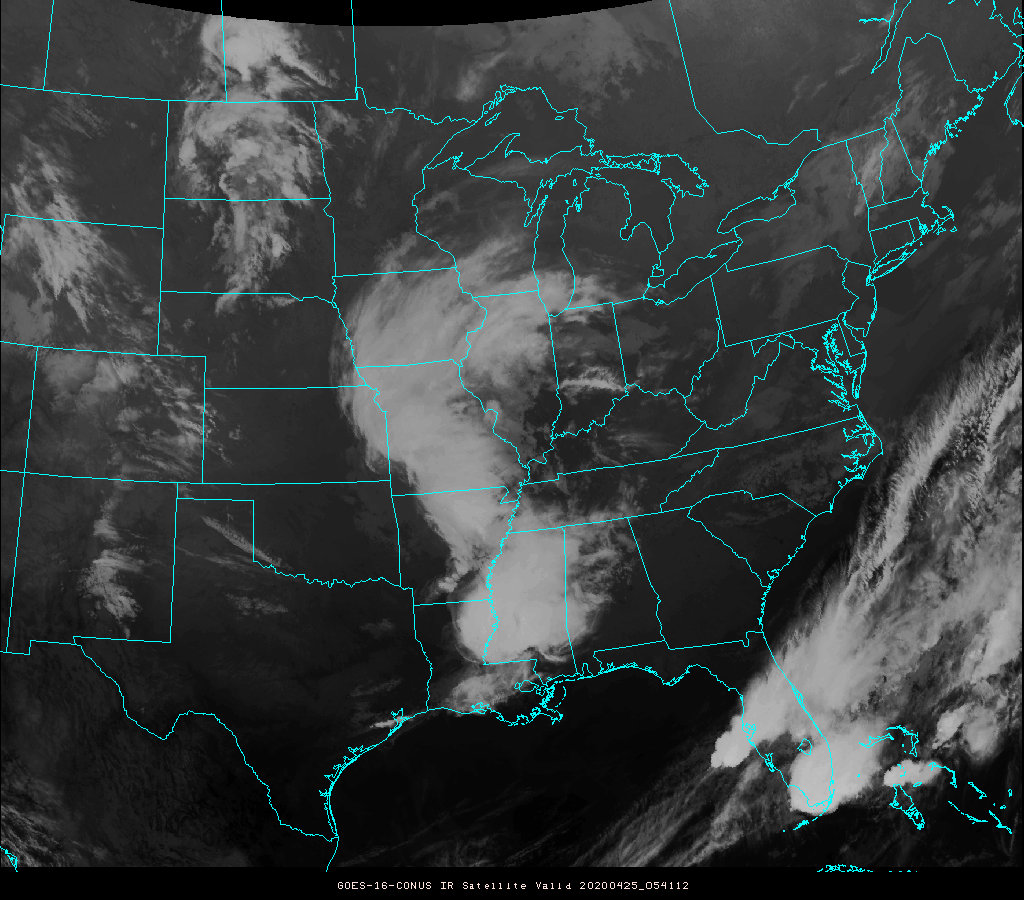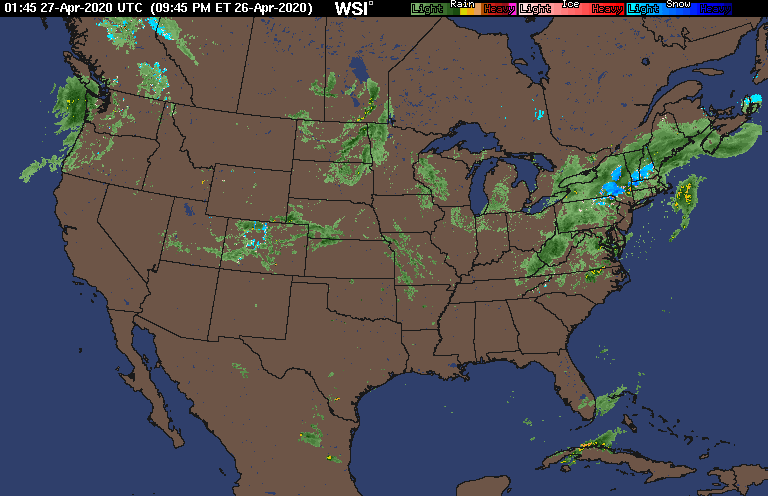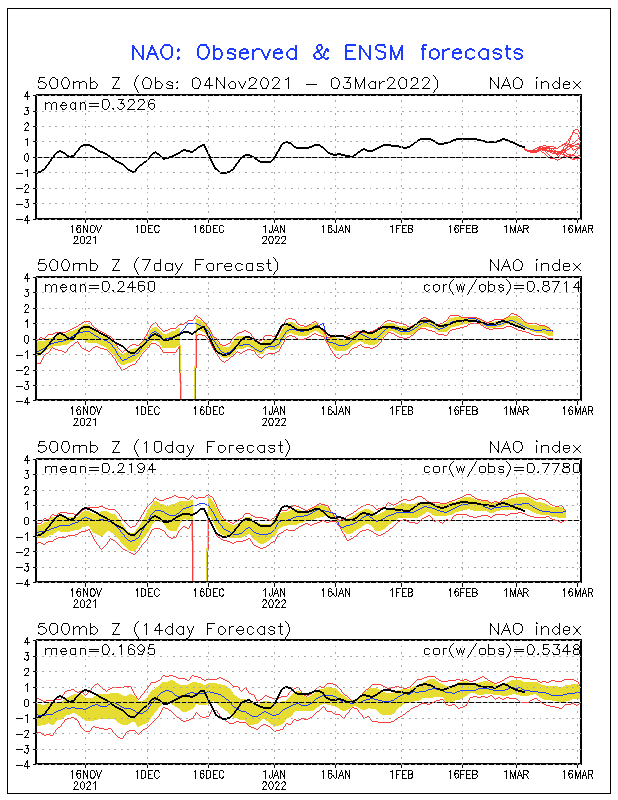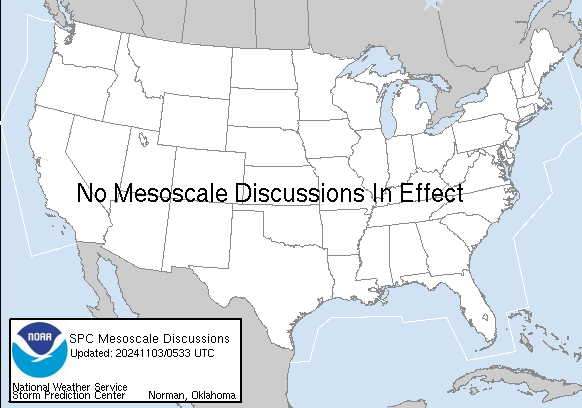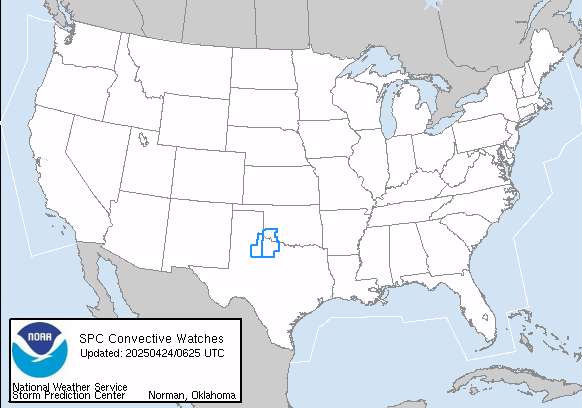NEW GFS MODEL TO GO ACTIVE JAN 14
2 posters
Page 1 of 1
 NEW GFS MODEL TO GO ACTIVE JAN 14
NEW GFS MODEL TO GO ACTIVE JAN 14
The Parallel GFS will take the place of the old GFS this wed
- Code:
Effective on or about January 14, 2015, beginning with the 1200
Coordinated Universal Time (UTC) run, the National Centers for
Environmental Prediction (NCEP) will upgrade the GFS Analysis and
Forecast System as follows:
- Changes to the model components
- Increases in horizontal resolution
- Addition of 0.25 degree gridded output
- Addition of new product fields
- Change to product naming convention
- Changes in product timeliness
- Changes to downstream model impacts
1) Model changes to the GFS Global Spectral Model:
- Increase horizontal resolution of the first segment of the
forecast from Eulerian T574 (~27 km) to Semi-Lagrangian
T1534 (~13 km), and extend the length of forecast from
192 hours to 240 hours
- Increase horizontal resolution of the second segment of
the forecast from Eulerian T192 (~84 km) to semi-Lagrangian
T574 (~35 km), and set forecast time from 240 hours to 384
hours
- Change from Eulerian dynamics to Semi-Lagrangian dynamics,
which uses Hermite interpolation in both vertical and
horizontal directions.
- Use 5 minute daily Real-Time Global (RTG) Sea Surface
Temperature (SST) to replace 1.0 degree Reynolds 7 day SST
analysis
- Initialize ice at small inland lakes in the northern
hemisphere with 4 km Interactive Multi-sensor Snow and Ice
Mapping System (IMS) ice analysis data from the National Ice
Center. For large water bodies, use 5 minute NCEP/MMAB ice
analysis data to replace 30 minute ice data
- Use 1982-2012 5 minute SST climatology (replacing 1982-
2001 1 degree SST climatology).
- Use 1982-2012 30 minute sea ice concentration climatology
(replacing 1982-2001 1 degree climatology).
- Replace update of model snow depth by direct insertion of
AFWA depth data with a blend of the model first guess depth
and the AFWA depth.
- Use X-number to prepare spectral transform base functions:
X-number is a numerical technique that uses paired numbers
to represent real number to avoid computational underflow or
overflow that can occur in spectral truncation for wave
number larger than T1000.
- Use divergence damping in the stratosphere to reduce noise
- Add a tracer fixer for maintaining global column ozone
mass
- Use the Monte-Carlo Independent Column Approximation
(McICA) for Rapid Radiative Transfer Model (RRTM) Radiation
- Reduce drag coefficient at high wind speeds
- Use Hybrid Eddy-Diffusivity Mass-Flux Planetary Boundary
Layer (EDMF PBL) scheme and Turbulent Kinetic Energy (TKE)
dissipative heating
- Re-tune ice and water cloud conversion rates, orographic
gravity-wave forcing and mountain block; and reduce
background diffusion of momentum
- Add stationary convective gravity wave drag
- Modify initialization of forecast state variables to
reduce a sharp decrease in cloud water in the first model
time step
- Correct a bug in the condensation calculation after the
digital filter is applied
- Replace 1.0 degree bucket soil moisture climatology with
CFS/Global Land Data Assimilation System (GLDAS) climatology
at T574 (~27 km)
- Replace 1.0 degree momentum roughness length climatology
by using a look-up table based on vegetation type
- Add a dependence of the ratio of the thermal and momentum
roughness on vegetation type
2) Model changes to the GDAS/GFS Hybrid 3D-VAR Ensemble Kalman
Filter (EnKF) Data Assimilation:
- Increase EnKF resolution from T254L64 to T574L64
- Assimilate hourly GOES and EUMETSAT atmospheric motion
vectors
- Update radiance assimilation:
- Assimilate SSM/IS UPP LAS and Metop-B IASI radiances
- Use enhanced radiance bias correction scheme
- Update to version 2.1.3 of the Community Radiative
Transfer Model (CRTM). CRTM v2.1.3 improves
specification of microwave sea surface emissivities.
This, in turn, improves the analysis of near surface
temperature over water, especially in the southern
oceans.
- Use stochastic physics in EnKF ensemble forecasts
- Change the dump window for GOES Satellite Wind (satwnd)
data from 1 hour to 6 hours. Subtypes will be added for
(NOAA/METOP AVHRR SATWIND) infrared cloud motion vector and
(NESDIS/GOES 3.9 micron channel) derived cloud motion vector
Last edited by Toot on 2015-01-12, 12:59 pm; edited 1 time in total
 Re: NEW GFS MODEL TO GO ACTIVE JAN 14
Re: NEW GFS MODEL TO GO ACTIVE JAN 14
wonder what kind of bias the new model will have ? Glad they are updating it. Should be fun to look at. Thanks Toot.

windstorm- Member
- Posts : 891
Join date : 2012-03-26
Location : Harrison, tn
 Re: NEW GFS MODEL TO GO ACTIVE JAN 14
Re: NEW GFS MODEL TO GO ACTIVE JAN 14
I would say the too cold shunting stuff more south and east will continue even with the updates. The better resolution is much welcomed tho..lol
 Similar topics
Similar topics» FSU predicts active hurricane season while others are predicting less active
» Hurricane forecast for 2013: Look for an active season
» CFSv2 seasonal guidance model
» NOAA near-term weather forecasts get powerful boost from new computer model
» Hurricane forecast for 2013: Look for an active season
» CFSv2 seasonal guidance model
» NOAA near-term weather forecasts get powerful boost from new computer model
Page 1 of 1
Permissions in this forum:
You cannot reply to topics in this forum

